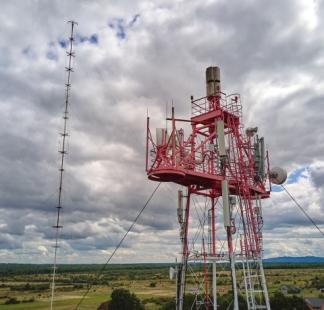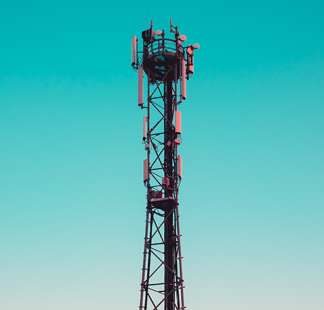- Jonathan Mwakijele
- Annitah Rodah Natwati
- Caleb Rori
- Gustavo Fonseca Ribeiro
Intermediate
- Bank transfer
- Credit card
- M-pesa
Event Organizer(s)

Description
This training explores the management of radio spectrum for satellite communication systems. It introduces the core principles of spectrum management for satellites, examines different types of satellite systems and Earth stations, and reviews their specific requirements. It also provides an overview of the International Telecommunication Union (ITU) Radio Regulations and related appendices, as well as the operational procedures of the ITU Radiocommunication Bureau (BR) and its software for notifying and recording satellite system assignments.
This course is well suited for junior regulators, early-career engineers, and technical staff working in national regulatory authorities (NRAs), satellite operating companies, and telecommunication ministries. It is also relevant to professionals from international organizations, consulting firms, and academic institutions who need a foundational understanding of satellite communications, spectrum management, and related regulatory frameworks. The course also welcomes institutions and individuals who wish to strengthen their capacity in the field of new technologies.
Participants should have a basic understanding of spectrum management. The course is intended for those working in regulatory authorities or in the information and communication technology (ICT) and telecommunications sector, either as providers or consultants.
Upon completion of this course, participants will be able to:
- Identify the basic principles of satellite communications, different types of satellites/satellite networks, and Earth Stations.
- Identify the relevant parts of ITU Radio Regulations governing spectrum use by satellite communications systems.
- Describe the SM procedures for satellite communications systems
- Describe the Satellite orbital position and frequency assignment plans
- Explain the respective roles of national regulatory authorities (NRAs), satellite operators, and ITU Radiocommunication Bureau in managing spectrum for satellite communications systems
- Interpret the provisions of ITU Radio Regulations in respect of satellite communications services
- Use the international and national rules and specifications (e.g., National Frequency Allocation Table)
- Interpret essential business development criteria
The course is instructor-led. Course materials such as PowerPoint slides will be posted at the ITU Academy. Participants must study each week, participate in scheduled activities, and undertake self-assessments. Participants will reinforce their understanding of the topics studied by drawing on their specific environments and are encouraged to consult with experienced colleagues who are working on a relevant topic. The following methods will be used for this course:
- Self-study of presentations and reference materials
- Instructor-led presentations and discussions through Microsoft Teams on Monday, Wednesday and Friday from 1500 Hours to 1700 Hours (GMT+3)
- Forum discussions through the ITU Academy portal
Participants in the course will be evaluated in the following manner:
- Forum participation (4): 20%
- Quizzes (4): 40%
- Final assignment: 40%
- Total: 100%
A total score of 70% or higher is required to obtain the ITU certificate
WEEK 1: Introduction to Satellite Communication Services
🕒 Monday, Wednesday, and Friday | 1500–1700 (GMT+3)
🎯 Learning Outcomes
- Identify the basic principles of satellite communications, including types of satellites, satellite networks, Earth stations, and the main service categories (FSS, MSS, BSS, RDSS).
- Explain how satellite communication services differ in function and coverage scale (global, regional, national), and analyse how these factors influence their applications.
🧩 Activities
- Live Lecture and Interactive Discussion
- Reading: Week 1 Materials and References
- Forum Topic 1: What is the relevance of Satellite Services in the current communications setup?
- Quiz 1 – Friday
WEEK 2: Frequency Bands, Orbital Positions, and Spectrum Management in Satellite Communications
🕒 Monday, Wednesday, and Friday | 1500–1700 (GMT+3)
🎯 Learning Outcomes
- Identify the frequency bands used in the Fixed-Satellite Service (FSS) for Geostationary Satellite Orbit (GSO) systems, including L, C, X, S, Ku, Ka, and V bands, as well as feeder links for the Broadcasting-Satellite Service (BSS).
- Explain the principles of frequency reuse and bandwidth utilization in satellite communication.
- Distinguish between Geostationary Satellite Orbit (GSO) and Non-Geostationary Satellite Orbit (Non-GSO) satellite systems in terms of spectrum management considerations.
- Describe the satellite orbital position and frequency assignment plans.
🧩 Activities
- Live Lecture and Discussion
- Reading: Week 2 Materials and References
- Forum Topic 2: High Data Rate Architectures
- Quiz 2 – Friday
WEEK 3: Earth Stations, Radio Regulations, and ITU BR Procedures for Satellite Services
🕒 Monday, Wednesday, and Friday | 1500–1700 (GMT+3)
🎯 Learning Outcomes
- Describe different types of Earth Stations (fixed and mobile/portable) and their functions.
- Interpret provisions of ITU Radio Regulations governing spectrum use by satellite systems, from Volume 1 to 4.
- Explain procedures of ITU-BR, including technical and regulatory examinations, as well as plans and lists for Broadcasting-Satellite Services (BSS) (Appendix 30/30A) and Fixed-Satellite Services (FSS) (Appendix 30B).
🧩 Activities
- Live Lecture and Discussion
- Reading: Week 3 Materials and References
- Forum Topic 3: LEO Technologies and Propagation Models
- Quiz 3 – Friday
WEEK 4: Practical Tools for Notification and Satellite Spectrum Coordination
🕒 Monday, Wednesday, and Friday | 1500–1700 (GMT+3)
🎯 Learning Outcomes
- Describe the process of electronic submission of notices and the role of the ITU-BR International Frequency Information Circular (IFIC) on CD-ROM in frequency management.
- Apply ITU-BR software packages to support notification and spectrum management tasks.
- Understand the roles of National Regulatory Authorities (NRAs), satellite operators, and the ITU-BR in managing spectrum for satellite communication systems.
🧩 Activities
- Live Lecture and Discussion
- Reading: Week 4 Materials and References
- Forum Topic 4: Emerging Architectures
- Quiz 4 & End-of-Course Assignment Submission – Friday











